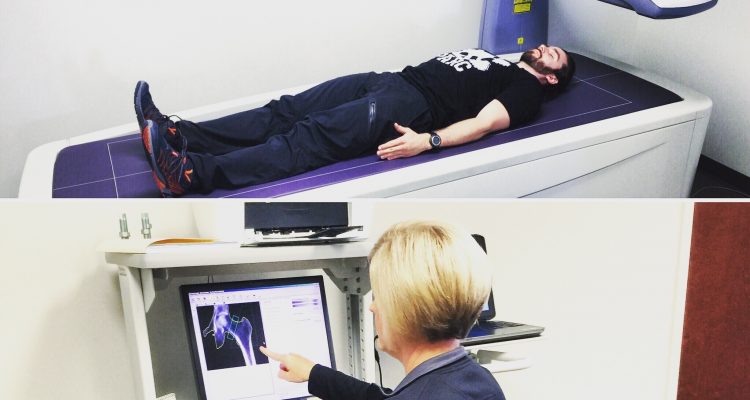“Physical Fitness” means being well rounded and competent in all areas of fitness. That’s why SPARC bases overall physical fitness on 4 Pillars. Last week, we told you about Pillar 1, Strength. Pillar 2, Body Composition, means having an appropriate amount of fat tissue, bone density, and muscle mass. Body composition affects all other aspects of physical fitness. While the affects may be subtle, they can make a huge difference in your longevity and quality of life.
There are 3 elements of body compostition to consider.
- Fat Tissue
Excessive body fat (above about 25% for men and 30% for women) has been strongly linked to cardiovascular disease, diabetes, and stroke. Excessive fat is distributed around the abdomen (android fat) and around the hips (gynoid fat). Excessive android fat in relation to gynoid fat (called the android/gynoid ratio) is also linked with increased risk of cardiovascular disease, diabetes, etc. Mechanically, excessive body fat puts undue stress on the joints which speeds up degradation. This may be felt after a long day of being active, or after years of low-level wear. The act of carrying extra weight also makes the relative feeling of exertion greater. Activities that should not be taxing, such as walking up a flight of stairs, may be more difficult with increased body fat. One common misconception with increased body fat is that because the person is used to carrying more weight, they are going to have more muscle under the fat. But muscle requires significant and progressive stress to stimulate growth. If you slowly gain body fat over the course of a decade, the acute stress on your muscles isn’t enough to cause adaptation. Your muscle mass ends up staying about the same, but has to carry a heavier load. - Bone Density
Being severely underweight, losing weight too fast, or depriving yourself of adequate nutrition can affect your bone density and set you up for developing osteoporosis or osteopenia. This is why professionals suggest losing around 1 to 2 lbs per week if your main goal is weight loss. Rapid weight loss above this rate can result in the loss of three times more lean tissue than fat tissue! Similarly, if you try to lose weight strictly through dieting, or dieting and cardiovascular exercise, much of your weight loss will be from muscle and bone mass, rather than undesired fat tissue. - Muscle Mass
Muscle is metabolically active and contributes to daily caloric burn. If you decrease muscle mass, then your body’s metabolism will also decrease. A good goal for fat loss is to maintain as much muscle mass as possible, which keeps your metabolism stoked. If you are engaging in heavy resistance training and impact exercise while you also diet, much of your muscle and bone mass will be maintained. Strength training essentially tells your body, “Hey! We need these muscles to lift heavy stuff and to absorb external force safely! Let’s not break them down for fuel.”
There are few resources for obtaining a total snapshot of your body composition. Conventional means such as skin calipers do not provide necessary information, such as bone density metrics and measurements of the potentially dangerous fat tissue around organs. The gold standard of body composition testing is through a DEXA Scan which uses low level xrays to give regional and overall measurements of fat tissue, bone density, and lean mass. If you are interested in receiving a DEXA Scan, please contact SPARC to schedule an appointment in our Performance Lab.
We are constantly told to lose weight and exercise, but we are rarely advised how to improve our body composition as a whole. Pursuing healthy levels of fat tissue, bone density, and muscle mass simultaneously will improve your overall health without the tradeoff of seeking one aspect of health at the cost of the others. SPARC’s 4 Pillars of Health will guide your comprehensive approach, so be sure to continue visiting our posts weekly as we outline each Pillar.

